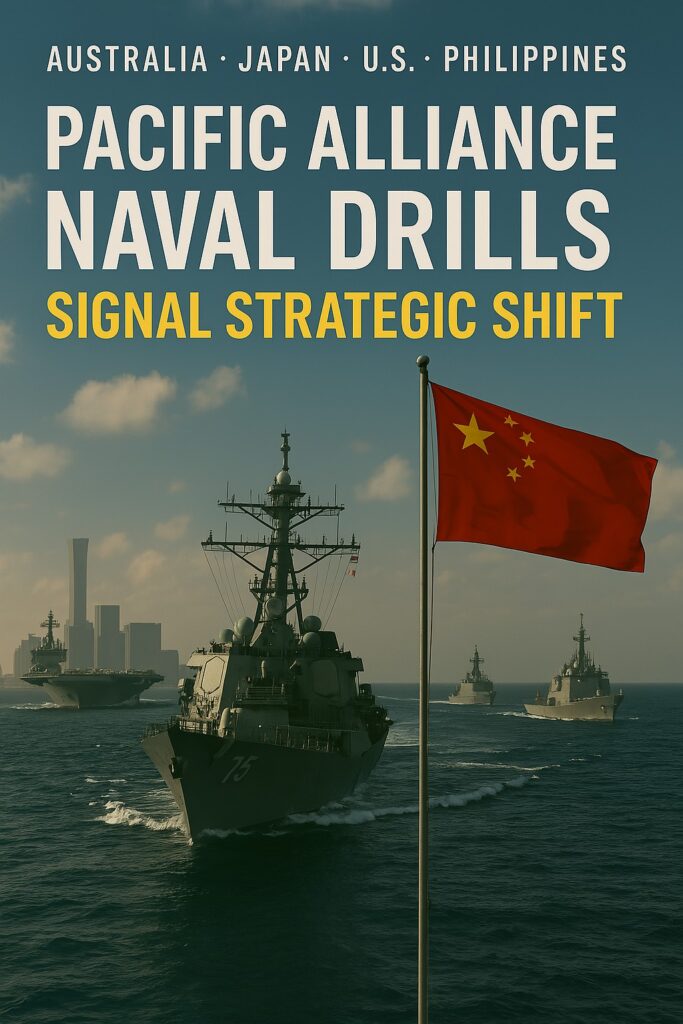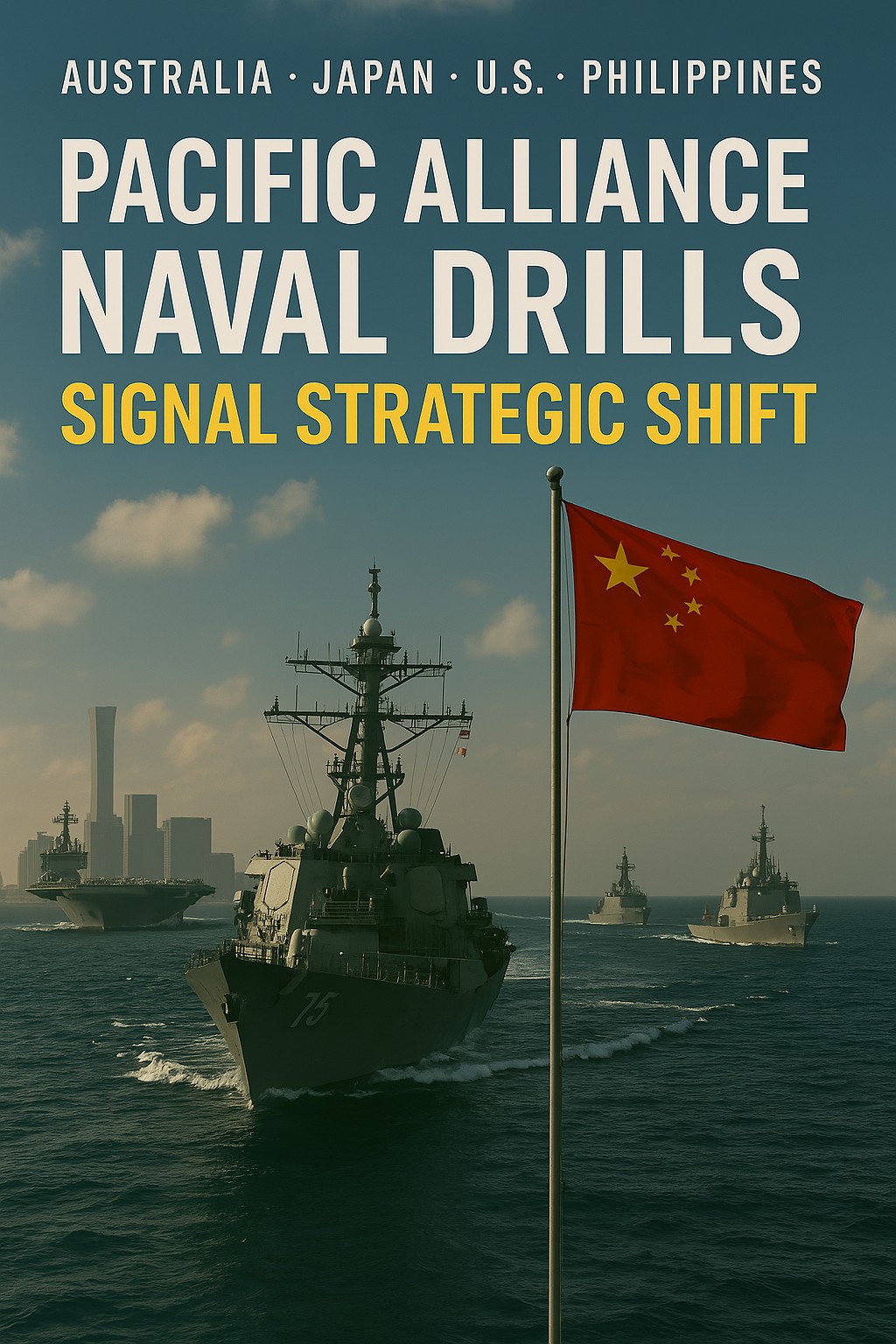
In a show of growing military coordination, the Pacific Alliance Naval Coalition (PANC) — comprising Australia, Japan, the United States, and the Philippines — launched a series of joint naval drills in the Coral Sea, marking the largest coordinated maritime exercise in the region since 2021. The drills, dubbed Operation Sovereign Wake, are designed to enhance interoperability, secure sea lanes, and counterbalance China’s expanding naval footprint.
The exercises feature anti-submarine warfare, electronic countermeasures, and live-fire missile tests, with over 40 vessels and 12,000 personnel participating. Notably, Japan deployed its Izumo-class helicopter carrier, while Australia contributed its newly upgraded Hobart-class destroyers. The U.S. Navy’s presence includes the USS Ronald Reagan and a contingent of unmanned surface vessels, signaling a shift toward autonomous warfare capabilities.
Philippine Navy Rear Admiral Caesar Bernard Valencia emphasized the strategic importance of the drills, stating, “This is not saber-rattling — it’s a reaffirmation of our commitment to a free and open Indo-Pacific.” His remarks follow recent incursions by Chinese vessels near Palawan and disputed waters off the Spratly Islands.
The timing of the drills coincides with the Pacific Islands Forum in Fiji, where leaders are debating the region’s security posture amid rising geopolitical competition. While some nations express concern over militarization, others — including Palau and the Marshall Islands — have voiced support for stronger defense ties with the U.S. and its allies.
Economically, the drills are also a signal to shipping and energy sectors. With $5 trillion in trade passing through Indo-Pacific waters annually, securing maritime routes is seen as essential to regional stability. Insurance premiums for vessels transiting the South China Sea have risen 18% since January, prompting calls for a regional maritime security fund.
China’s Foreign Ministry condemned the drills as “provocative and destabilizing,” but analysts argue that the exercises are a strategic recalibration, not escalation. Defense experts point to the increasing use of satellite-linked targeting systems and AI-assisted threat detection, suggesting that the region is entering a new era of tech-driven deterrence.
From the Coral Sea to the Philippine archipelago, the message is clear: the Asia Pacific is no longer a passive theater — it’s becoming a strategic fulcrum where sovereignty, security, and alliances converge.
Let me know when you’re ready for the illustration — I’ll bring this maritime maneuver to life.




